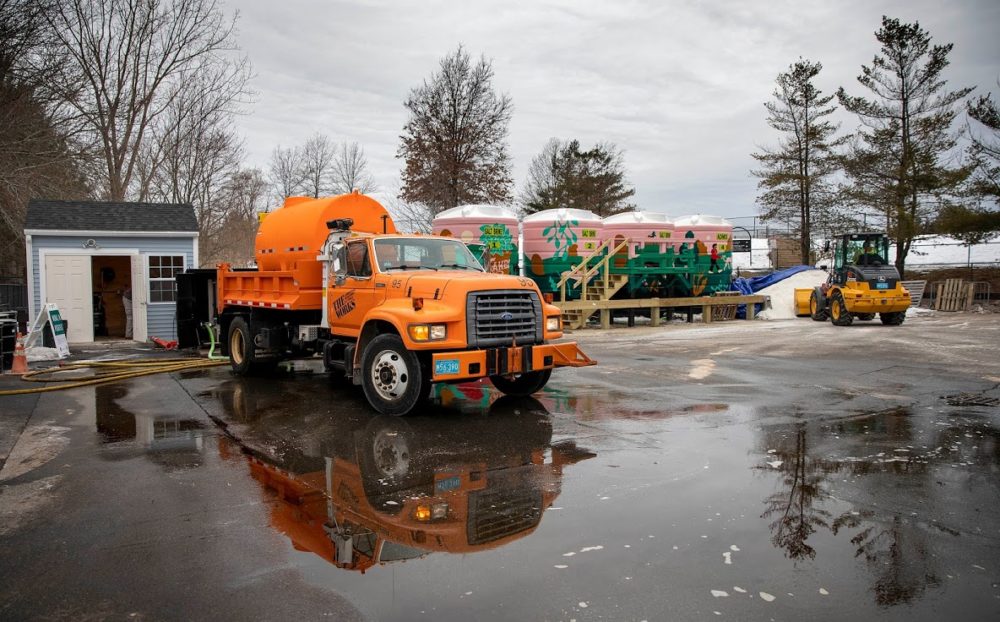Road Salt Is A Problem For Rivers. Adding Water May Be A Solution

With a snow storm coming a Cambridge Works truck fills up with brine from the tanks at the brine mixing station at Danehy Park. (Robin Lubbock/WBUR)
A three-story-tall gate creaks open, and reveals a warehouse filled to the brim with brown crystals. It’s a mountain of rock salt.
“We filled this shed this past week,” says T.J. Shea, Cambridge’s superintendent of streets. Shea is what some might call a “snow fighter.” It’s his job to keep roads dry all winter using this salt at Cambridge’s Public Works facility in Danehy Park. There’s more than a thousand tons of salt here – equal in weight to about nine blue whales. But Shea says it won’t last long.
“This is a couple of storms worth, depending on the event and the duration,” he says.
That’s a lot of salt, and by the end of the season, almost all of it will end up in our rivers and streams, where it can harm the health of freshwater ecosystems. Now, as local researchers assess the impact on local waterways, towns like Cambridge are trying new ways to use less salt while keeping the roads safe.
Read the rest of the story at WBUR’s website.
